Okay, everyone put the flame guns away for a second. I have a serious question. 
First a disclaimer. I'm not talking about the old timers who think running hot and having a chimney fire is good because it cleans things out...I'm talking about something much more controlled and well intentioned. I also sweep my chimney multiple times a season and burn with 20% or better wood. So here goes.
We have been running our Englander 30 24/7 this winter. We have lots of draft so we need to shut the air down quick to get ahead of it. Typically the flames mostly go out on the wood itself and the secondaries take over. Stove top hangs out at about 600-650F and the flue temps stay between 550-650F. The bottom wood on the sides tends to smoke as its the furthest away from the doghouse air. The smoke gets burnt up by the secondaries but makes the sides of the stove and the bottom of the glass dirty. No smoke comes out the chimney.
Obviously smaller, hotter fires clean things up a bit....but not all the way. And not when you are doing 2 or 3 full loads a day trying to go low and slow it tends to build up a bit.
What happened....
So we came back from a weekend at my parents house and the thermostat was keeping the house at 55F for us. Time to get a hot fire going to warm the house back up. I ran the stove hard to warm the place up faster. Using small and medium splits I got the stove top up into the 700's and the flue temp was in the 700's as well. Things maybe peaked at 800/800F for a little while as the wood was really offgassing.
Obviously I only got about 2 hours out of this load but the house was still cool. Added some more wood on top of the large bed of coals and repeated it. After this load the house was up to temp and I had a very large bed of coals. I raked the coals and put a couple small splits on the coals to help burn them down. Sure I wasted a little wood and some unnecessary amount of heat went up the flue but the house was now warm and no fossil fuels were used.
The end result?
My dirty-ish glass and inside of the stove was sparkling clean. Like showroom clean. It doesn't even get this clean when I brush and vacuum the inside of it when I sweep the chimney. My cap was also less black...more like dark brownish.
Soooooo...is running the stove hard with stove top and flue temps closer to 800 on purpose just to help dry things up a bad thing? Obviously it wouldn't be the best idea on a chimney that hasn't been swept in a long while. It is also important to make sure that the flame doesn't go too far over the baffle board as it would be horrible for flames to go up the flue. And never make your stove so hot that it glows.....
We've all hit 800F temps in our flue or stove tops at one time or another. But is it pure stupidity to do this intentionally for an extended period of time.....just to help clean the stove and dry up any potential creosote in the flue?
Thanks!

First a disclaimer. I'm not talking about the old timers who think running hot and having a chimney fire is good because it cleans things out...I'm talking about something much more controlled and well intentioned. I also sweep my chimney multiple times a season and burn with 20% or better wood. So here goes.
We have been running our Englander 30 24/7 this winter. We have lots of draft so we need to shut the air down quick to get ahead of it. Typically the flames mostly go out on the wood itself and the secondaries take over. Stove top hangs out at about 600-650F and the flue temps stay between 550-650F. The bottom wood on the sides tends to smoke as its the furthest away from the doghouse air. The smoke gets burnt up by the secondaries but makes the sides of the stove and the bottom of the glass dirty. No smoke comes out the chimney.
Obviously smaller, hotter fires clean things up a bit....but not all the way. And not when you are doing 2 or 3 full loads a day trying to go low and slow it tends to build up a bit.
What happened....
So we came back from a weekend at my parents house and the thermostat was keeping the house at 55F for us. Time to get a hot fire going to warm the house back up. I ran the stove hard to warm the place up faster. Using small and medium splits I got the stove top up into the 700's and the flue temp was in the 700's as well. Things maybe peaked at 800/800F for a little while as the wood was really offgassing.
Obviously I only got about 2 hours out of this load but the house was still cool. Added some more wood on top of the large bed of coals and repeated it. After this load the house was up to temp and I had a very large bed of coals. I raked the coals and put a couple small splits on the coals to help burn them down. Sure I wasted a little wood and some unnecessary amount of heat went up the flue but the house was now warm and no fossil fuels were used.
The end result?
My dirty-ish glass and inside of the stove was sparkling clean. Like showroom clean. It doesn't even get this clean when I brush and vacuum the inside of it when I sweep the chimney. My cap was also less black...more like dark brownish.
Soooooo...is running the stove hard with stove top and flue temps closer to 800 on purpose just to help dry things up a bad thing? Obviously it wouldn't be the best idea on a chimney that hasn't been swept in a long while. It is also important to make sure that the flame doesn't go too far over the baffle board as it would be horrible for flames to go up the flue. And never make your stove so hot that it glows.....
We've all hit 800F temps in our flue or stove tops at one time or another. But is it pure stupidity to do this intentionally for an extended period of time.....just to help clean the stove and dry up any potential creosote in the flue?
Thanks!



 .
.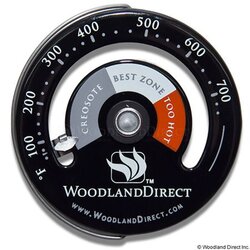

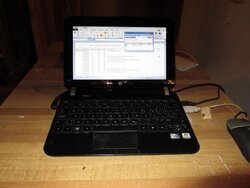
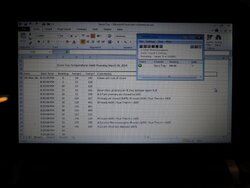
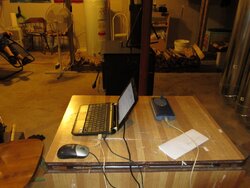
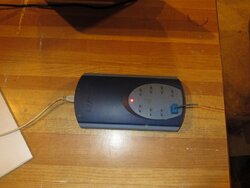
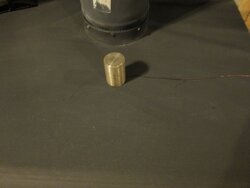
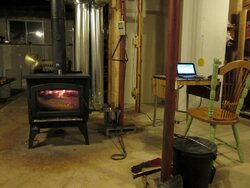
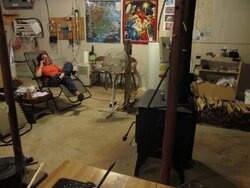


 . With such a following, they can't be bad stoves, and 4+ cubic foot firebox is very appealing.
. With such a following, they can't be bad stoves, and 4+ cubic foot firebox is very appealing.